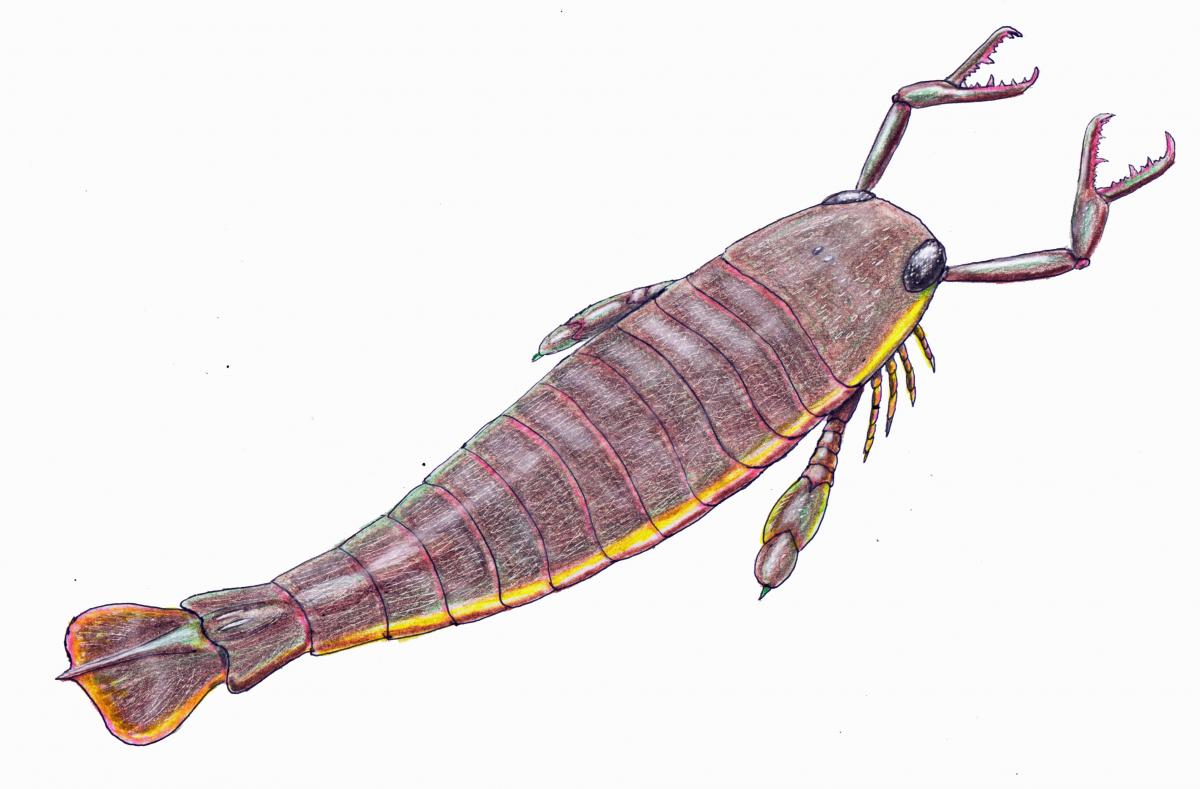 Last week, I shared a zoomed-in photo of an unnamed organism’s little “boxing glove” and told you nothing else except that I’m terrified of it. What is “it”? It’s a eurypterid, specifically Eurypterus lacustris from the Williamsville Waterlime formation in upstate New York.
Last week, I shared a zoomed-in photo of an unnamed organism’s little “boxing glove” and told you nothing else except that I’m terrified of it. What is “it”? It’s a eurypterid, specifically Eurypterus lacustris from the Williamsville Waterlime formation in upstate New York.
Eurypterids were a diverse group of marine predators in the Paleozoic era, from the Ordovician to the Permian (about 488–251 million years ago). They ranged in size from tiny (10 cm) to enormous—2 meters or more. A cast of an absolutely giant specimen was in a hallway outside of my graduate student office in the MCZ and I could not look at it when I walked by. The thing was horrific. Could this be related to my phobia of people pulling apart and eating crustaceans and other seafood? Probably. At least my psyche is consistent! But come on, even animated, these things are monstrous!
 Okay, where was I? Eurypterids are arthropods, like crustaceans and insects. Within the phylum Arthropoda, they nestle into a group known as Chelicerata, which makes them most closely related to living scorpions, spiders, and horseshoe crabs. Chelicerates are named for the appendages, called chelicerae, which are found in front of the mouth and make these animals look super creepy. (Sorry. I know I'm editorializing here. But I have just spent a considerable amount of time looking at cherlicerates, and if you do the same I think that you’ll agree with me!) They have been found preserved in abundance all over the world. The overall high quality of preservation and depth of fossil record is not surprising given their hard exoskeleton and marine habitat.
Okay, where was I? Eurypterids are arthropods, like crustaceans and insects. Within the phylum Arthropoda, they nestle into a group known as Chelicerata, which makes them most closely related to living scorpions, spiders, and horseshoe crabs. Chelicerates are named for the appendages, called chelicerae, which are found in front of the mouth and make these animals look super creepy. (Sorry. I know I'm editorializing here. But I have just spent a considerable amount of time looking at cherlicerates, and if you do the same I think that you’ll agree with me!) They have been found preserved in abundance all over the world. The overall high quality of preservation and depth of fossil record is not surprising given their hard exoskeleton and marine habitat.
Kudos and congratulations to Joshua Vallejos, our big winner this week, who came closest by correctly identifying the genus.
Now, does anyone have a good cat video I can watch so I don’t get nightmares tonight?
Are you a teacher and want to tell us about an amazing free resource? Do you have an idea for a Misconception Monday or other type of post? Have a fossil to share? See some good or bad examples of science communication lately? Drop me an email or shoot me a tweet @keeps3.

